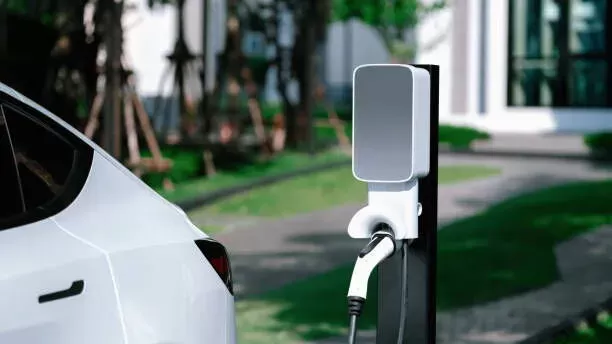Notifications

6 minutes, 25 seconds
-12 Views 0 Comments 0 Likes 0 Reviews

Introduction
As a Professional EV Charger Manufacturer in China, Topper Company Provides Dependable Electric Vehicle Charging Equipment and Comprehensive Charging Solutions.
As electric vehicles (EVs) become increasingly mainstream, understanding the various charging methods is essential for both new and experienced owners. Among these, Mode 3 charging stands out as one of the most widely used, offering a balance of speed, safety, and convenience.
This comprehensive guide explains what Mode 3 charging is, how it works, its pros and cons, and how it compares with other modes like Mode 2 and Mode 4. Whether you're planning to install a home charger or rely on public charging points, this guide will help you make informed decisions.
Mode 3 charging refers to AC charging through a dedicated EV charging station. It's the standard at public charging locations such as shopping centers, office buildings, and residential complexes.
Uses alternating current (AC), typically between 3.7 kW and 22 kW.
Requires a dedicated Mode 3 charging cable.
Offers advanced safety features, including real-time monitoring and automatic fault shutoff.
Enables intelligent communication between the vehicle and charger to optimize energy transfer.
A Mode 3 cable connects an electric vehicle to a dedicated AC charging station. These cables are specifically designed for safety and efficiency, incorporating protection mechanisms to guard against overheating, surges, and other hazards.
Connection: The cable links the charger to the vehicle’s inlet.
Communication: The system negotiates the optimal charging parameters.
Safety Checks: Voltage, temperature, and current are monitored in real-time.
Charging: Once validated, the car charges at its maximum supported rate.
Mode 3 cables feature different plug types based on regional standards:
Type 1 (SAE J1772) – Common in North America and Japan.
Type 2 (Mennekes) – Standard across Europe and widely adopted globally.
GB/T – Predominantly used in China.
Mode 3 is a preferred charging method for many EV owners thanks to its practicality and performance:
Though slower than DC fast charging (Mode 4), Mode 3 significantly outpaces charging via a regular outlet.
Typical speeds:
3.7 kW (16A, single-phase): ~15–20 miles/hour
7.4 kW (32A, single-phase): ~30–40 miles/hour
22 kW (32A, three-phase): ~60–80 miles/hour (depending on EV capability)
Integrated fault detection and automatic shutoff.
Continuous monitoring of voltage, current, and temperature.
Ground fault protection and robust insulation.
Mode 3 chargers are found in:
Public parking lots
Corporate campuses
Shopping centers
Multi-residential buildings
Many units feature:
Scheduled charging for off-peak electricity rates.
App control for remote monitoring and usage tracking.
Despite its strengths, Mode 3 does have a few drawbacks:
While public chargers are abundant, installing one at home involves:
Hardware costs: €400–€1,500+
Installation fees: €200–€1,000 (varies by site)
A Mode 3 charger must be hardwired into your home’s electrical system, requiring:
32A (or higher) breaker
Adequate grounding and protective devices
Not ideal for time-sensitive recharging:
3.7 kW: ~16 hours to fully charge a 60 kWh battery
7.4 kW: ~8 hours
22 kW: ~3 hours (if the EV supports it)
| Feature | Mode 2 (Portable) | Mode 3 (AC Station) | Mode 4 (DC Fast) |
|---|---|---|---|
| Power Source | Household socket | Dedicated AC unit | High-power DC |
| Charging Speed | Slow (2.3–3.7 kW) | Medium (3.7–22 kW) | Very fast (50–350 kW) |
| Installation | Plug-and-play | Requires setup | Commercial-grade |
| Safety | Basic protection | Advanced monitoring | Industrial-grade safety |
| Best For | Emergencies, low usage | Daily home & public use | Road trips, quick top-ups |
| Cost | €200–€600 | €400–€2,000 | €0.30–€0.80/kWh (public) |
Mode 2: Suitable for occasional or emergency use.
Mode 3: Best for daily charging at home or work.
Mode 4: Ideal for quick charging during long-distance travel.
Mode 3 charging hits the sweet spot for most EV drivers. It’s significantly faster and safer than basic charging, widely accessible, and supports smart energy management.
Homeowners seeking a practical daily charging solution.
Businesses offering charging for staff or visitors.
Public network operators deploying reliable AC infrastructure.
You take frequent long road trips.
Your EV supports ultra-fast DC charging.
Mode 3 charging is the backbone of modern EV infrastructure—reliable, safe, and efficient. Although it involves some upfront cost for home installation, the long-term convenience makes it a worthwhile investment for most users.
As EV adoption continues to rise, Mode 3 remains a crucial component in meeting daily charging needs—bridging the gap between home convenience and public charging speed.Know more about Google SEO Directory
China EV Chargers EV Charger Manufacturer EV Charging Solutions

